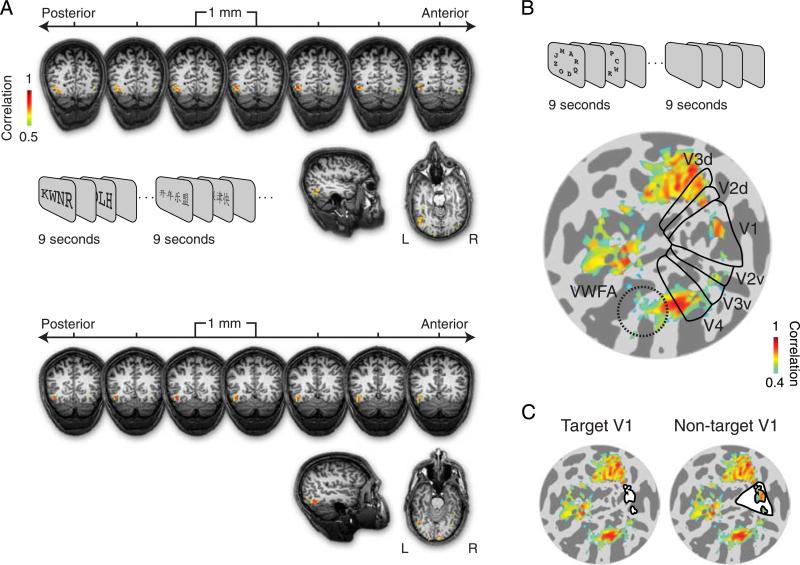Figure 2.
Regions of interest. (A) The visual word form area (VWFA) was localized, separately for each subject, by presenting alternating blocks of English and Chinese characters. For two sample subjects, responses are shown on seven representative coronal anatomical slices (1-mm slice thickness). Sample sagittal and axial slices are shown in the lower right. Color indicates the correlation between the measured time series and the best-fitting sinusoid with period equal to that of the stimulus alternations (r > 0.5, in phase with blocks of English letters, see Methods section). The robust left-lateralized activity was consistent across subjects and was used to define the VWFA in each subject. (B) Target-specific subregions of visual areas V1–V4. The borders of visual areas V1, V2, V3, and V4 are indicated with black lines on a flattened representation of the left hemisphere occipital lobe of a sample subject. For reference, the approximate location of the VWFA is indicated with a dotted circle, but this area was defined in the volume, not the flat map, so this does not correspond exactly to the region of interest used in our analysis. Dark gray indicates sulci and light gray indicates gyri. Color indicates correlation with the best-fitting sinusoid (r > 0.4, in phase with blocks of target letters). Letters were presented in the periphery, and thus evoked activity in corresponding subregions of each visual area. (C) Left: “Target V1” was defined by restricting V1 to those voxels showing responses in phase with blocks of target letters and exceeding the correlation threshold of 0.4. The region of interest is filled in white, with a black outline. Target subregions for other areas (V2–V4) were defined similarly (not shown). Right: In a control analysis to test for retinotopic specificity, a “Non-target V1” subregion was defined by taking the entire retinotopically defined V1 (shown in (B)) and excluding the “Target V1” subregion.

